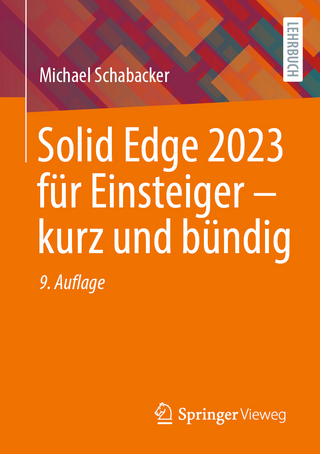
Electromagnetic Scattering and Its Applications
Kluwer Academic Publishers (Verlag)
978-0-85334-955-6 (ISBN)
- Titel ist leider vergriffen;
keine Neuauflage - Artikel merken
1. Scattering of Radiation by Particles.- 1.1 Interaction of radiation with single particles.- 1.2 Interaction of radiation with particle clouds.- 1.3 Electromagnetic wave propagation.- 1.4 General scattering relationships.- 1.5 General scattering theory.- 1.5.1 The boundary condition method.- The sphere.- The infinite cylinder.- The ellipsoid.- 1.5.2 The extended boundary condition method.- 1.5.3 The integral equation method.- 1.6 Approximation methods in scattering.- 1.6.1 Very small particles (Rayleigh scattering).- 1.6.2 Higher order expansions.- 1.6.3 Rayleigh-Gans-Debye or Born approximation.- The sphere.- The cylinder.- The ellipsoid.- 1.6.4 The integral formulation.- 1.6.5 Fraunhofer diffraction.- 1.6.6 Anomalous diffraction.- 1.6.7 Geometrical optics.- 1.7 Multiple scattering and radiative transfer.- 1.8 Anisotropy.- 1.9 Irregular particles.- 2. Radiative Transfer in Particle Clouds.- 2.1 Radiation emitted by sources.- 2.2 Radiative transfer between source and sink.- 2.3 The equation of radiative transfer.- 2.4 Radiative transfer in the absence of multiple scattering.- 2.5 Radiative transfer in the presence of multiple scattering.- 2.5.1 The method of successive singular scattering.- 2.5.2 The zone method.- 2.5.3 The discrete ordinate method.- Allowance for anisotropic scattering.- 2.5.4 The method of moments.- 2.5.5 The flux method in dense systems.- 2.5.6 Light beam propagation in scattering media.- 3. Methods of Measuring Particle Size Distribution.- 3 1 Methods of measuring dispersity of solid and liquid particles.- 3 2 Photographic and holographic methods for measuring particle sizes.- 3.3 Methods based on the Fraunhofer diffraction pattern.- 3.3.1 The method developed by Swithenbank et al..- 3.3.2 Shifrin's method.- 3.3.3 The Shifrin-Kolmakov method.- 3.3.4 Petrov's method.- 3.4 Methods based on anomalous diffraction.- 3.4.1 The Shifrin-Perelman method.- 3.4.2 The Shifrin-Kolmakov-Chernyshov method.- 3.5 The Phillips-Twomey inversion method.- 3.6 The Backus-Gilbert inversion method.- 3.7 Comparison of the inversion methods.- 4. Measuring Instruments and Data Processing for the Determination of Particle Size Distribution.- 4.1 Swithenbank's method.- 4.2 Shifrin's method.- 4.2.1 Measuring instruments.- 4.2.2 Experimental data processing to obtain the particle size distribution.- 4.2.3 Measurement errors and the testing of equipment.- 4.2.4 Selecting components for devices and calculating their parameters.- 4.3 The Shifrin-Kolmakov method.- 4.4 The Shifrin-Perelman method.- 5. Other Measurements using Light Scattering.- 5.1 Laser fringe anemometry.- 5.2 Measurement of refractive index.- 5.3 Measurement of anisotropy.- 6. Measurement of Particle Characteristics in Industry and Research.- 6.1 A study of steam turbine operation.- 6.2 A study of gas turbine blade cooling.- 6.3 Determination of drop size spectrum in sprays.- 6.4 Determination of the size distribution of drops in a natural gas stream.- 6.5 Determination of contamination in oil products.- 6.6 Determination of the spectrum of mercury drop sizes in HV gas discharge devices.- 6.7 Measurement of particle size in a flame.- 6.7.1 Methods based on the Fraunhofer diffraction pattern.- 6.7.2 Diffusion broadening spectroscopy.- 6.8 Estimation of aggregate size of carbon black by the dispersion quotient method.- 6.9 Measurement of crystal growth rates.- 6.10 Determination of the size distribution of liquid aerosols.- 6.11 Kinetic measurements in aerosols.- 6.12 Determination of the size distribution of atmospheric aerosols.- 6.13 Determination of particle size in seawater.- 6.14 A study of the efficiency of dust collectors.- 6.15 A study of processes taking place in wet scrubbers.- 6.15.1 A study of the break-down of liquids by a gas flow.- 6.15.2 Determining an analytical expression for the drop size distribution.- 6.15.3 A study of the repeated break-down of drops in a turbulent flow.- 6.15.4 A study of the coagulation of drops.- References.- Author index.
| Zusatzinfo | biography |
|---|---|
| Verlagsort | Dordrecht |
| Sprache | englisch |
| Maße | 150 x 230 mm |
| Gewicht | 590 g |
| Themenwelt | Technik ► Maschinenbau |
| ISBN-10 | 0-85334-955-X / 085334955X |
| ISBN-13 | 978-0-85334-955-6 / 9780853349556 |
| Zustand | Neuware |
| Haben Sie eine Frage zum Produkt? |
aus dem Bereich


